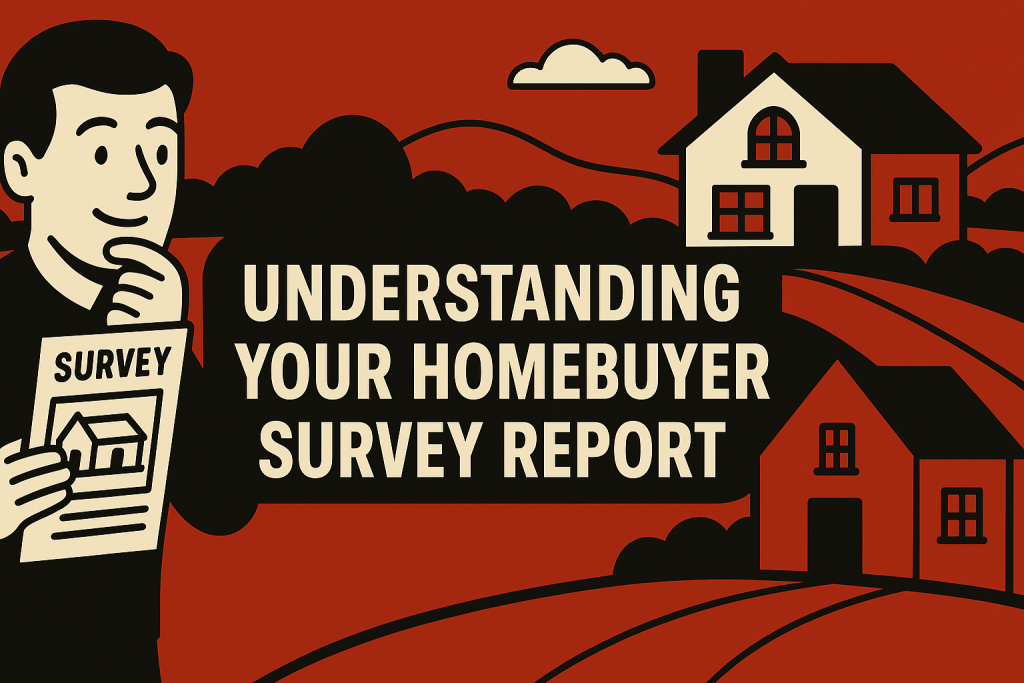Receiving your RICS Home Survey report can feel like deciphering a complex code, especially for first-time buyers. Filled with technical terms and condition ratings, it’s easy to feel overwhelmed. However, this document is your most valuable tool in understanding the true condition of your prospective home. This guide aims to demystify your Homebuyer Survey report, helping you understand its key components and how to interpret the findings in plain English.
Demystifying Your Survey Report
The Purpose of the Report
A RICS Home Survey Level 2 (HomeBuyer Survey) report is a professional assessment designed to provide you, the buyer, with a clear and concise understanding of the property’s condition. Its primary purpose is to identify potential problems that could affect the property’s value and offer advice on necessary repairs and maintenance. It’s your independent “health check” for the property, helping you make an informed decision.
Key Sections You’ll Find
While the exact layout may vary slightly between providers, a typical HomeBuyer Survey report will include:
- Executive Summary: A brief overview of the most significant findings and recommendations.
- Property Description: Details about the property, its construction, and its location.
- Condition Ratings: The core of the report, using a “traffic light” system for various elements.
- Detailed Observations: Explanations of identified defects, their potential causes, and implications.
- Recommendations: Advice on necessary repairs, maintenance, and any further investigations required.
- Optional Valuation: If requested, a market valuation and insurance rebuild cost.
Jargon-Free Explanation
RICS has revamped its reports to improve clarity and detail, making them more consumer-friendly. The language aims to be straightforward, but if you encounter terms you don’t understand, don’t hesitate to ask your surveyor for clarification. They’re there to help you comprehend the findings.
Decoding Condition Ratings
The Traffic Light System
The most distinctive feature of a RICS Home Survey Level 2 is its “traffic light” condition rating system:
- Condition Rating 1 (Green): No repair is currently needed; only routine maintenance.
- Condition Rating 2 (Amber): Defects that need repairing or replacing but are not considered serious or urgent.
- Condition Rating 3 (Red): Serious problems that require immediate attention.
What Each Rating Means for You
Understanding these ratings is crucial for prioritising your actions. Green items can remain on routine maintenance schedules, amber items should be factored into your future budget and maintenance plan, and red items demand immediate attention and could form the basis for renegotiation with the seller.
Prioritising Issues
The traffic light system helps you decide what to tackle first. Focus on Condition Rating 3 items as these are most serious, then address Condition Rating 2 items proactively to prevent them from becoming more severe (and costly).
Actioning the Recommendations
Repair Advice
The report will provide general recommendations for repairs and maintenance. For Condition Rating 3 items, this might involve engaging specialist contractors or commissioning more in-depth investigations. For Condition Rating 2 items, it could be advice on routine maintenance or minor repairs.
Further Investigations
It’s common for a HomeBuyer Survey to recommend further investigations by specialists. This indicates that the surveyor has identified potential issues outside the scope of a standard visual inspection, such as possible structural movement or hidden damp, and that an expert assessment (for example, by a structural engineer or damp specialist) is warranted.
Discussing with Your Surveyor
The process doesn’t end when you receive the report. A key part of the surveyor’s service is follow-up support. Take the opportunity to discuss any concerns or questions about the findings. Your surveyor can clarify complex points, offer deeper insights, and guide your next steps—whether that’s renegotiating the price or seeking specialist advice.
Your HomeBuyer Survey report is a powerful tool for informed decision-making. By understanding its language and implications, you can approach your property purchase with confidence.
To ensure you have full clarity on your prospective home, connect with a qualified RICS Chartered Surveyor through RICS Survey Experts. Their expertise will provide the peace of mind you need.
| Condition Rating | Meaning | Action Required | Example Issues |
|---|---|---|---|
| Condition Rating 1 (Green) | No repair is currently needed. | Routine maintenance only. | Good condition roof, sound walls, well-maintained windows. |
| Condition Rating 2 (Amber) | Defects that need repairing or replacing but are not serious or urgent. | Plan for repairs/replacement in the near future. | Minor damp patches, worn guttering, small non-structural cracks, old but functional boiler. |
| Condition Rating 3 (Red) | Serious problems that need fixing immediately. | Urgent repairs required; consider renegotiation or specialist investigation. | Significant structural cracks, extensive damp/rot, major roof leaks, unsafe electrical wiring. |
